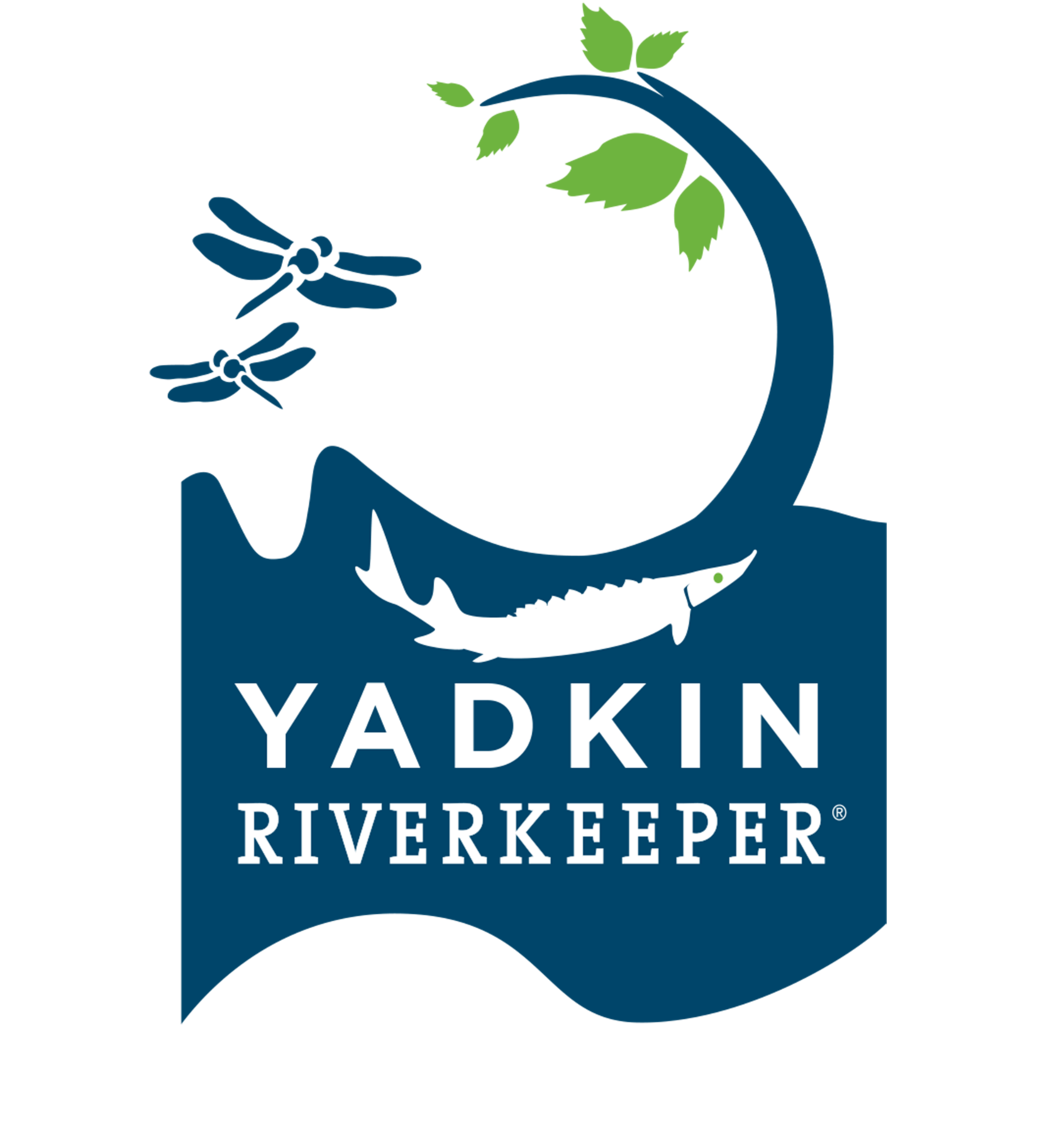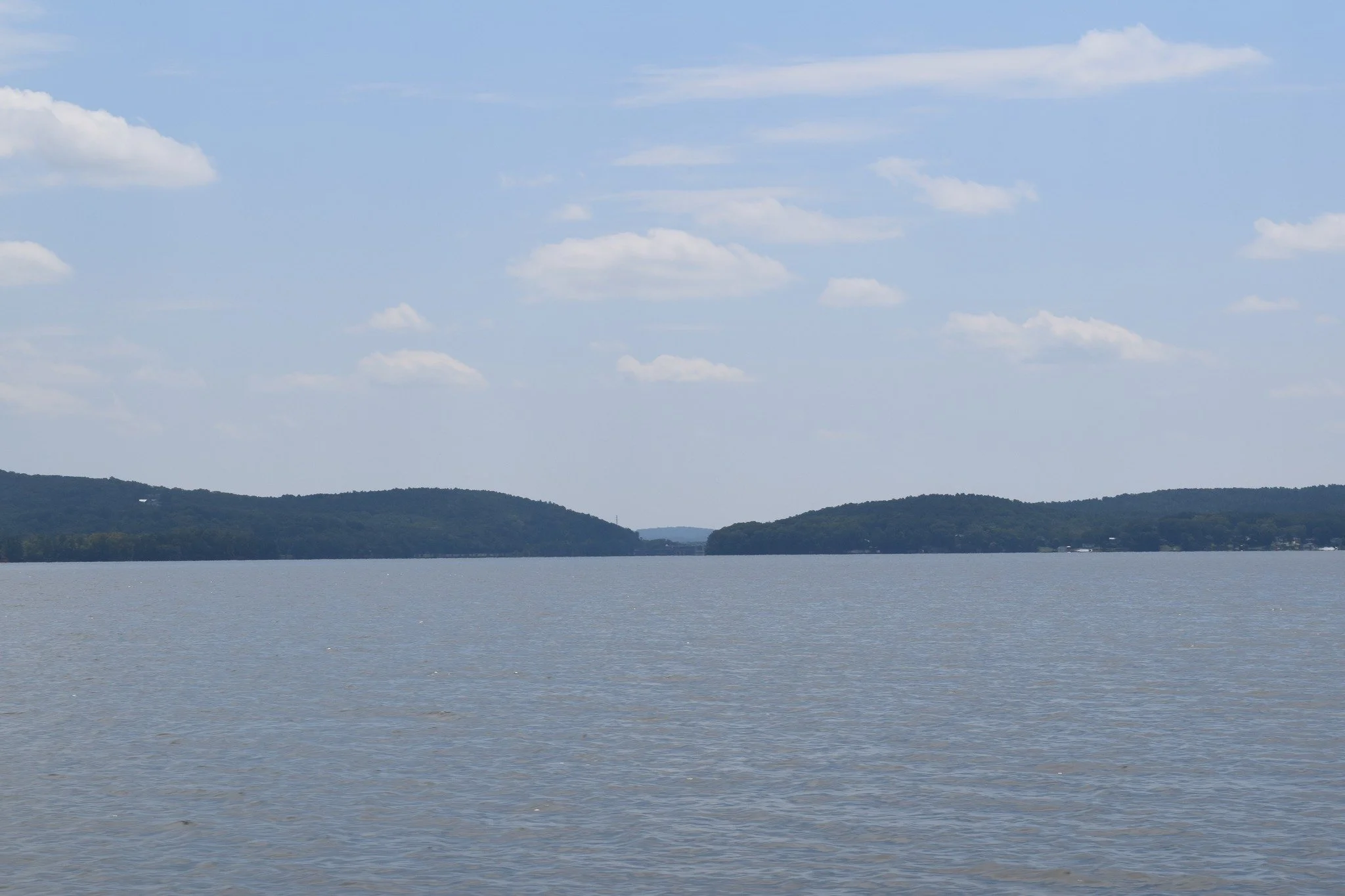-Stephanie Stephens, Water Quality Specialist
High Rock Lake is the heart of the Yadkin River watershed, fed by the River and the arteries of its tributaries. High Rock Lake (HRL) is the largest man-made reservoir in the Yadkin watershed (15,000 acres) and unfortunately is considered impaired by the State of North Carolina for chlorophyll-a, pH and turbidity. The NC Division of Water Resources (NCDWR) has identified excessive nutrients, particularly nitrogen and phosphorus, as the primary factors leading to impairment and the increase in Harmful Algal Blooms or HABs.
Over the last five years, Yadkin Riverkeeper has sampled sections of the lake and collaborated with a range of stakeholders, including the Department of Environmental Quality (NCDEQ), NCDWR, and city and county water utilities, to gather data on nutrient levels in the lake that contribute to this impairment. Recently, Yadkin Riverkeeper (YRK) analyzed data going back to 2018 to hone in and draw conclusions on the severity of the nutrient contamination coming into the lake from upstream. Consistent with state regulations, this sampling occurred during the algae growing season, from April through October.
In 2018, 2019 and 2020, YRK sampling for nutrients on HRL focused in three regions, the Upper Lake, Middle Channel and Lower Lake, YRK collected samples for total nitrogen, nitrogen kjeldahl, nitrogen ammonia, NO2+NO3, orthophosphate, phosphorus and fecal coliforms by taking surface grab samples from our Waterkeeper boat. All samples were delivered to the state-certified Pace Analytical Laboratory in Kernersville, NC for analysis. Results showed slightly elevated levels of total nitrogen and phosphorus in 2018, followed by drastically higher levels of fecal coliforms and phosphorus in 2019. When compared to EPA’s North Carolina Piedmont Ecoregion Nutrient recommendation, phosphorus levels in 2019 were in the top 25th percentile, which is considered very high.
Stephanie presenting Yadkin Riverkeeper Edgar Miller with the "homemade" depth-integrated sampling device for collecting samples of water to be tested for chlorophyll-a from the "photic zone."
In 2020, YRK found nitrogen, phosphorus and fecal coliforms at elevated levels in the Upper and Lower Lake regions, with a record high of 7300mg/100ml of water for fecal coliform bacteria, more than 30 times higher than the EPA recommended for recreational use. Based on this analysis, it is fair to say that fecal matter, which is high in both phosphorus and nitrogen, could be contributing to the impairment as well. In 2021, YRK recorded an all-time high reading for phosphorus (1.8 mg/L) in the Middle Channel of HRL (YAD152C), a site that has become the focal point of our future sampling efforts due to NCDEQ selecting it as its “point of compliance” for chlorophyll-a impairments. The state selected this site after years of research on what point in the lake best reflects the overall chlorophyll-a impairment.
Site specific sampling continued in 2022 and in 2023 and YRK began to sample for chlorophyll-a and nutrient levels monthly for the entire growing season in 2023. In 2024, beginning in April, Yadkin Riverkeeper was back on the water conducting monthly routine sampling at the point of compliance (YAD152C). With the help of YRK Boat Committee Chairman Bo Wagner and YRK Board member, Dr. Courtney DiVittorio of WFU Engineering, important data has been collected to help us determine the current conditions of HRL water quality and chlorophyll-a levels at site YAD152C. Since April, as the water and ambient temperatures increase, chlorophyll-a levels have increased by 10 ug/L per month. YRK’s most recent sample in July was 54.9 ug/L, compared to the statewide chlorophyll-a standard of 40 ug/L.
High concentrations of chlorophyll-a are an indication of excessive nutrients and conditions that could lead to potentially Harmful Algal Blooms (HABs), which are of concern in HRL and all the Yadkin Lakes. Specifically, Microsiera wollei, formerly known as lyngbya, or “black-mat algae” is a benthic algae that grows at the bottom of the lake and produces floating mats that can produce toxins that can contaminate drinking water supplies and limit recreational use of the lakes.
Nicole and Stephanie pulling the sample.
YRK recently built a “depth-integrated” sampling device to collect water samples deeper into the water column. The “depth-integrated” sampling device will allow us to take a composite sample of the water column in the photic zone (where light penetrates) at site YAD152C to test for chlorophyll-a levels. The measurement of chlorophyll-a is usually indicative of HABs when in excess of 40 ug/L. In 2022, the NC Environmental Management Commission established a site specific chlorophyll-a standard for HRL of 35 ug/L, calculated as the geomean of monthly samples taken at YAD152C during the algae growing season. As noted, high chlorophyll-a levels are an indicator of excessive nutrient levels and the potential for HABs that can be harmful to people, pets and wildlife. Chlorophyll-a is the primary pigment responsible for plants and certain algae being green. Compliance is measured by calculating the geomean during the algae growing season and determining if there is one or more exceedances of the standard every three years. Unfortunately, the state only samples NC lakes every five years, so YRK is working to fill that gap through our HRL monitoring program.
Currently, the High Rock Lake Nutrient Management Strategy, or “High Rock Lake Rules” are being drafted and are expected to be published in mid-2025. These rules will set specific guidelines and regulations for the reduction of nutrient levels from all contributing sources of pollution, including municipal wastewater treatment plants, industrial dischargers, agriculture runoff and urban stormwater. Adoption of the High Rock Lake Rules is imperative to reducing the nutrient levels coming into HRL, which will mitigate high levels of chlorophyll-a and hopefully reduce the potential for HABs.



